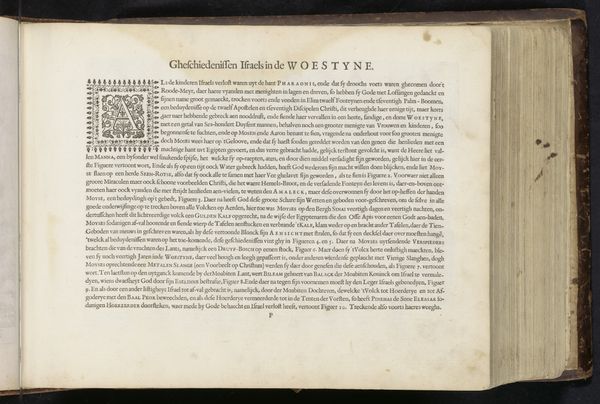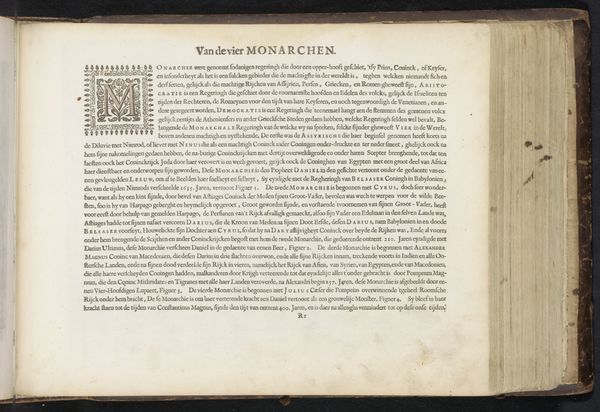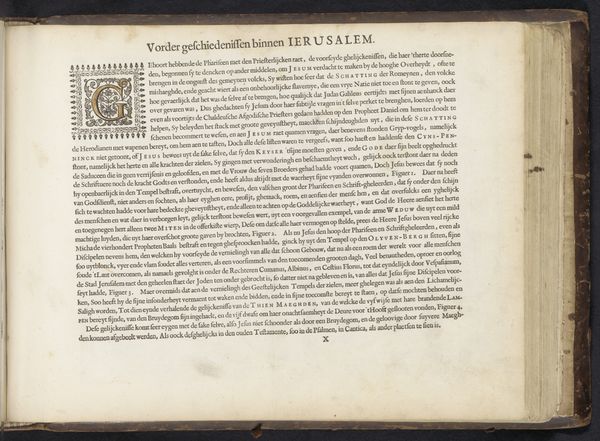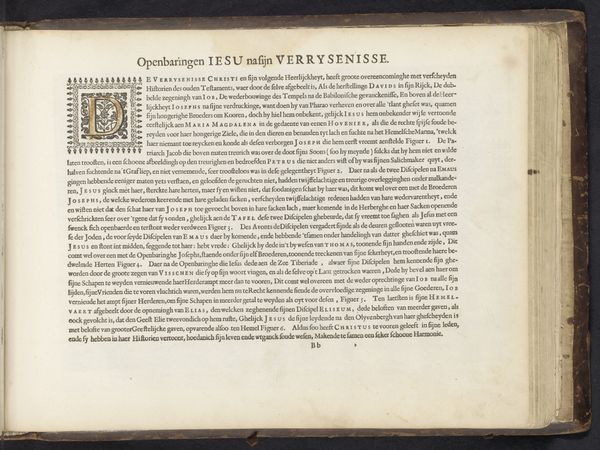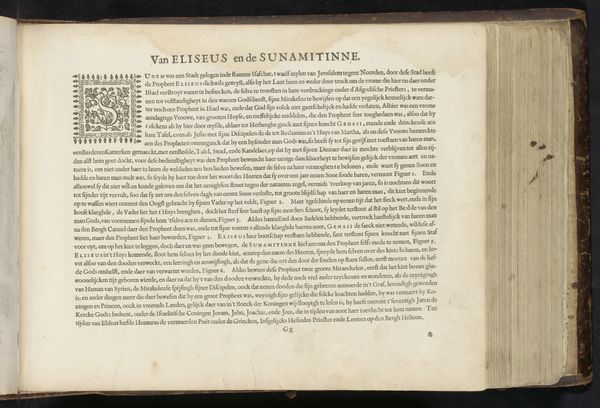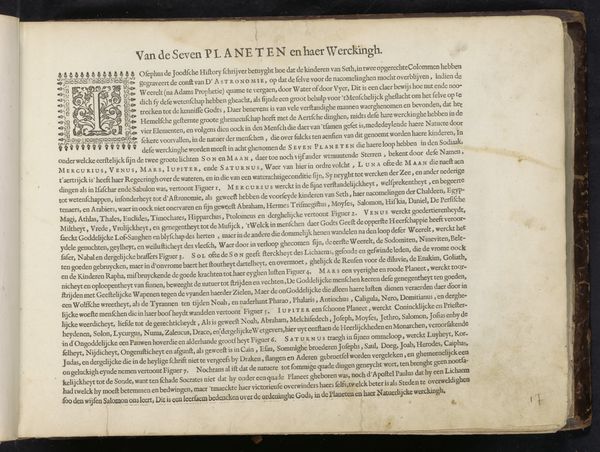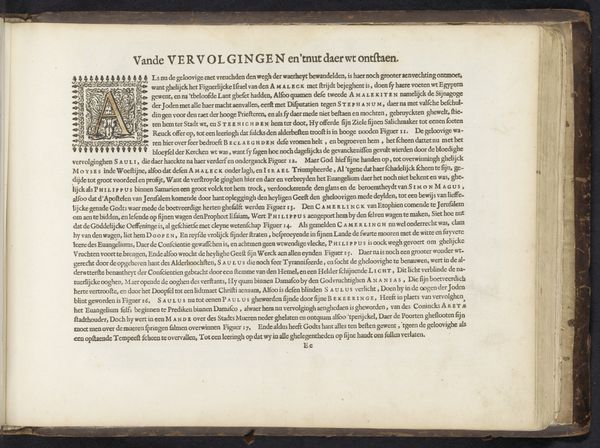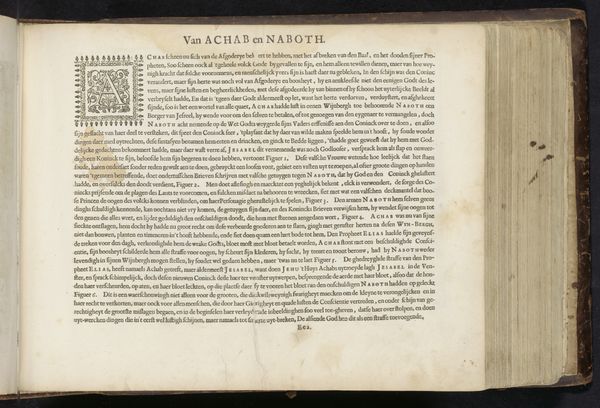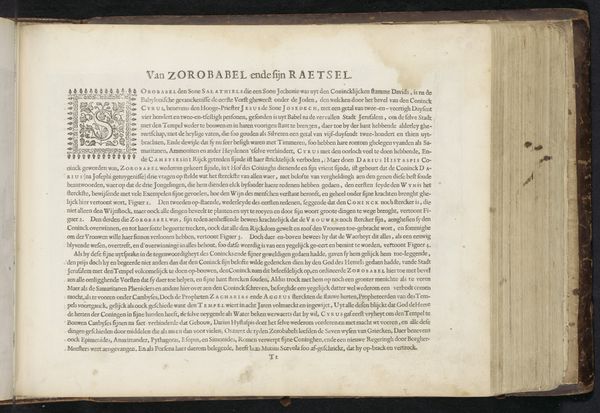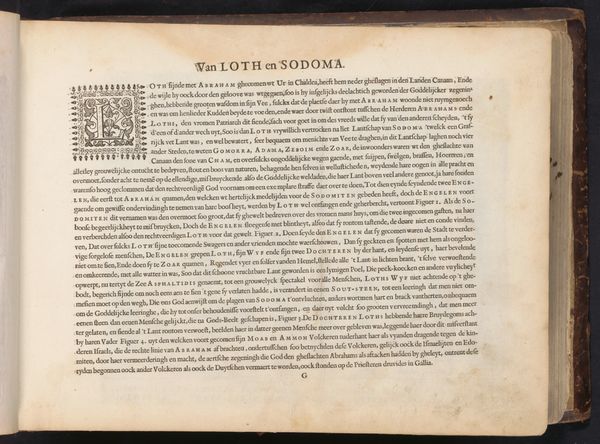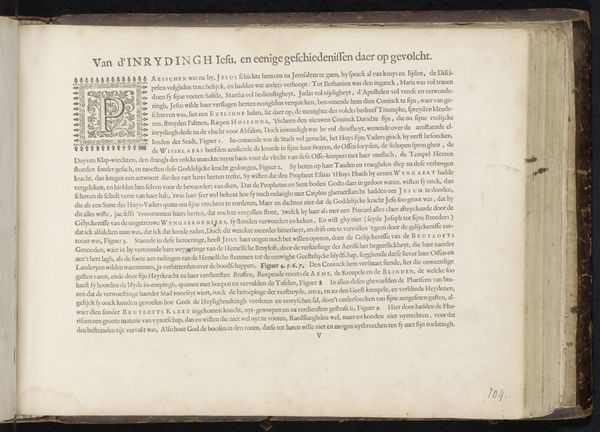
print, textile, paper
#
baroque
# print
#
textile
#
paper
Dimensions: height 257 mm, width 340 mm
Copyright: Rijks Museum: Open Domain
Curator: This page, titled "Van de Wercken der Barmherticheyt," which translates to "The Works of Charity," dates back to 1646, and the print itself resides in the collection of the Rijksmuseum. Jan Philipsz Schabaelje is credited as the artist. Editor: My first thought is one of complexity. Look at this sea of tightly packed text, almost overwhelming. It gives off an air of serious academic or religious endeavor. It feels imposing, demanding close study. Curator: Indeed, the composition itself is significant. The dense block of text, primarily Dutch, speaks to the dissemination of ideas during the Baroque period, particularly religious and moral teachings. Its materiality—the paper, the print—affirms its purpose as a carrier of knowledge. Editor: I'm immediately curious about who had access to such a text in the 17th century. Was it meant for a learned elite, or was it more widely distributed? Were women, people of color, and those from the working class able to engage with this content? Curator: That's an important question. We should consider it from its perspective, a textual expression embedded with references to the dual symbolism of "Succeeding Charity," distinguishing the blessed from the damned with "Sheep" and "Goats" characters which express kindness through various "Acts." Editor: While I recognize that distinction, the broader context reveals a social hierarchy, one that historically benefited some while excluding others. It prompts us to critically examine how the notion of "charity" might reinforce societal power imbalances or obscure systemic injustice. Curator: However, let's not dismiss its ambition. It is an early model of communicating such important moral views by all accounts. What it tried to present must have felt meaningful and hopeful. Editor: No doubt. Still, reflecting on our readings prompts us to remain acutely aware of history, ideology, the social structure that it has reproduced; thus we see with renewed urgency. Curator: In summary, by close study, considering these "Works," both form and historical circumstance allow us today's consideration of the ethics this artifact originally spoke to. Editor: And that interplay between past ideology and current social analysis continues to spark crucial conversation today.
Comments
No comments
Be the first to comment and join the conversation on the ultimate creative platform.
